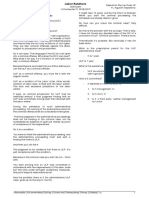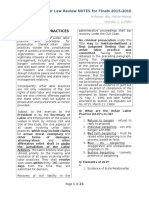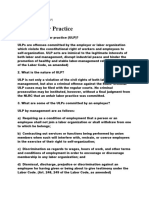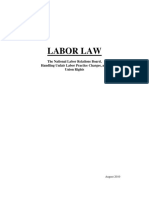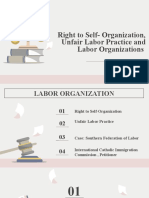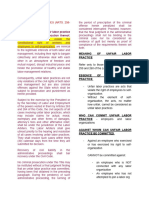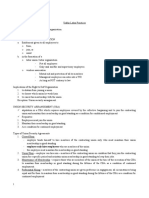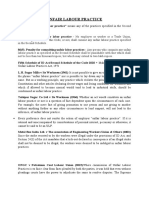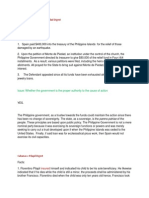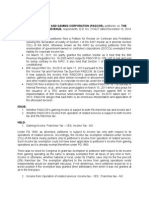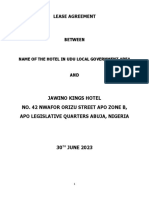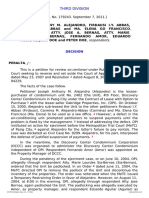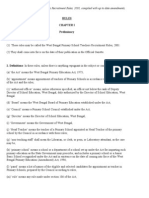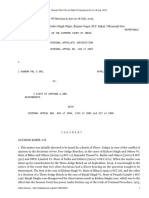0% found this document useful (0 votes)
96 views35 pagesUnfair Labor Practice
The document outlines the legal bases and definitions of Unfair Labor Practices (ULP) under both international law and the Philippine Labor Code, detailing specific articles that define ULPs, their nature, and the jurisdiction over ULP cases. It explains the penalties associated with ULP, including civil and criminal aspects, and discusses who can commit ULPs, including employers and labor organizations. Additionally, it provides illustrative cases and requirements for valid outsourcing to avoid ULP, emphasizing the importance of good faith and the right to self-organization.
Uploaded by
Jako DomingoCopyright
© © All Rights Reserved
We take content rights seriously. If you suspect this is your content, claim it here.
Available Formats
Download as PDF, TXT or read online on Scribd
0% found this document useful (0 votes)
96 views35 pagesUnfair Labor Practice
The document outlines the legal bases and definitions of Unfair Labor Practices (ULP) under both international law and the Philippine Labor Code, detailing specific articles that define ULPs, their nature, and the jurisdiction over ULP cases. It explains the penalties associated with ULP, including civil and criminal aspects, and discusses who can commit ULPs, including employers and labor organizations. Additionally, it provides illustrative cases and requirements for valid outsourcing to avoid ULP, emphasizing the importance of good faith and the right to self-organization.
Uploaded by
Jako DomingoCopyright
© © All Rights Reserved
We take content rights seriously. If you suspect this is your content, claim it here.
Available Formats
Download as PDF, TXT or read online on Scribd
/ 35











